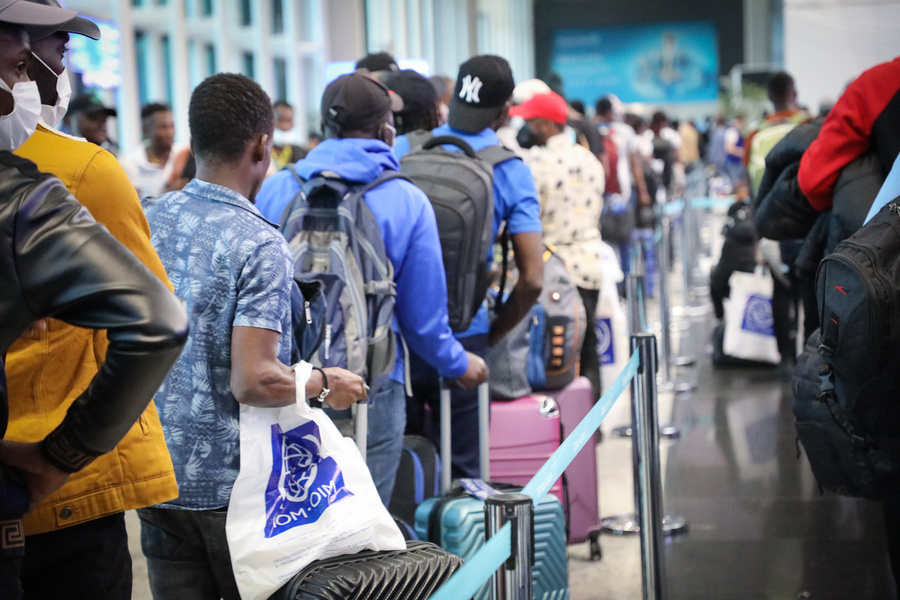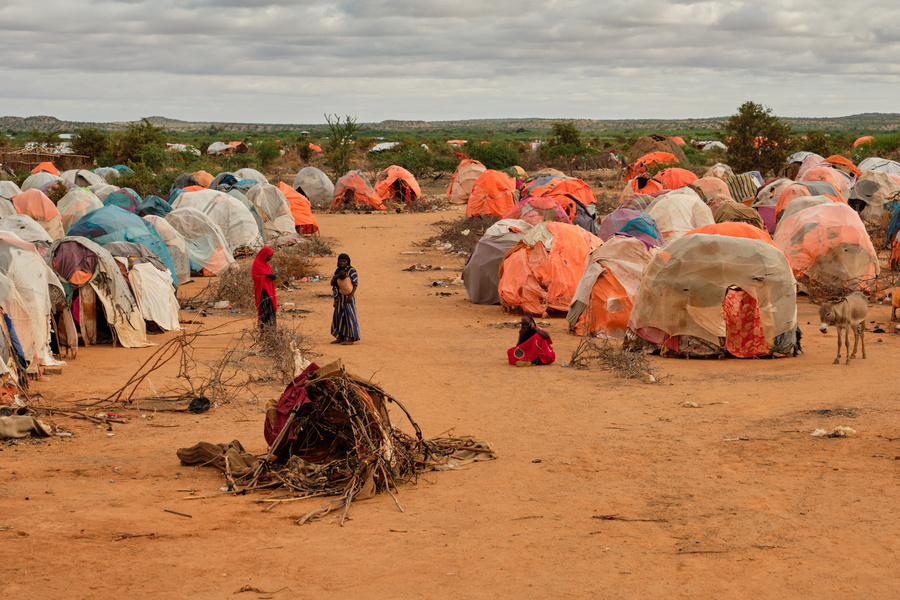-
Countries
-
Data and Analysis
-
Special Focus
-
Crisis Responses
Le rapport d’outil de veille sur la situation dans les quatre pays côtiers du golfe de Guinée (Ghana, Bénin, Togo et Côte d’Ivoire) à la date du 30 Novembre 2022, élaboré par le Groupe régional d’analyse intersectorielle (GRANIT) sous la direction et l’impulsion d’OCHA, de l’OIM et de REACH, fait le suivi, sur la base des données et analyses de partenaires humanitaires et de développement, des tendances relatives à des indicateurs clés reflétant la situation dans les quatre pays côtiers limitrophes du Burkina Faso, au 30 Novembre 2022.
Ainsi, le rapport examine l’évolution, pendant les onze premiers mois de l’année 2022, au Ghana, Togo, Bénon et Côte d’Ivoire :
- des incidents sécuritaires
- des types et fréquences de violences
- des déplacements forcés de PDI et réfugiés
- de l’ouverture des frontières internationales
- de la sécurité alimentaire et nutrition
- des violences basées sur le genre
- des dynamiques communautaires
- de la situation des droits de l’Homme.

Contact
DTM Nigeria, iomnigeriadtm@iom.int
Language
English
Location
Nigeria
Period Covered
Jan 16 2023
Jan 22 2023
Activity
- Mobility Tracking
- Event Tracking
The DTM Emergency Tracking Tool (ETT) is deployed to track and to collect information on large and sudden population movements, provide frequent updates on the scale of displacement and quantify the affected population when needed. As a sub-component of the Mobility Tracking methodology in Nigeria, ETT utilises direct observation and a broad network of key informants to capture best estimates of the affected population per location, enabling targeted humanitarian response planning.
Between 16 and 22 January 2023, a total of 1,545 new arrivals were recorded in locations in Adamawa and Borno states. The new arrivals were recorded at locations in Askira/Uba, Bama, Dikwa, Gwoza, Monguno and Kala Balge* Local Government Areas (LGAs) of the most conflict-affected state of Borno and in Fufore, Gombi, Girei, Hong, Maiha, Michika, Mubi South, Mubi North, Song, Yola South and Yola North LGAs of Adamawa State.
Jan 31 2023
Print

Jan 31 2023
Print

Jan 31 2023
Print


Contact
DTM Support — iomdrcdtm@iom.int
Language
French
Location
Democratic Republic of the Congo
Period Covered
Jan 24 2023
Jan 25 2023
Activity
- Mobility Tracking
- Event Tracking
L’évaluation rapide de l’OIM (EmergencyTrackingTool,ETT) est un outil mis en place dans le but de collecter des informations sur les mouvements importants et soudains de populations. Ces informations sont collectées à la suite de visites sur le terrain et/ou d’entretiens téléphoniques avec les informateurs clés des sites de déplacement ou des communautés d’accueil. D’autres informations sont ensuite recueillies et analysées à partir des outils d’évaluation rapide multisectorielle (ERM). Ce rapport présente les résultats de l'évaluation menée par le biais d'entretiens sur le terrain entre le 24 et 25 janvier 2023.

Contact
DTMCostaRica@iom.int
Language
Spanish
Location
Costa Rica
Period Covered
Dec 01 2022
Dec 31 2022
Activity
- Flow Monitoring
- Mobility Tracking
- Event Tracking
Cantones: Liberia, La Cruz, Upala, Los Chiles, San Carlos, San José, Alajuelita Corredores, Coto Brus, Golfito, Osa y Puerto Jiménez.
Costa Rica, al igual que el resto de la región centroamericana, se ha caracterizado por ser un corredor migratorio para personas que recorren de manera terrestre desde el sur hasta el norte de América y que tienen como destino los países del norte del continente. Este flujo en movilidad por las Américas se encuentra compuesto principalmente por nacionales de Haití, Cuba, la República Bolivariana de Venezuela, así como otros países de Suramérica, África y Asia.
A partir de los datos reportados por la Estación de Recepción Migratoria (ERM) de Los Planes, Gualaca en Panamá, durante el 2022 se identificó un aumento del 77 por ciento en el volumen de este fujo en comparación con el 2021: durante el 2021 se registraron 126.512 salidas de la ERM, mientras que en 2022 se reportaron 226.610. Desde enero a junio de 2022, a través del monitoreo de flujos de personas en situación de movilidad por las Américas realizado por OIM Costa Rica y Panamá, se encontró que el 84 por ciento de las personas encuestadas indicaron que planeaban quedarse en Costa Rica un día o menos. Asimismo,el Gobierno de Panamá reportó que las personas que ingresaron a Panamá por el Darién y que conforman este flujo en su mayoría fueron personas de la República Bolivariana de Venezuela (80%), Ecuador (5%), Haití (5%) y Colombia (3%).

Contact
Angélica Madrigal amadrigal@iom.int
Language
Spanish
Location
Costa Rica
Period Covered
May 23 2022
Oct 20 2022
Activity
- Survey
- Registration
- Flow Monitoring
Las localidades fronterizas en las cuales se realizó el registro de monitoreo de flujos fueron Santa Elena de La Cruz, La Cruz de Upala, Tablillas y La Trocha de Los Chiles. El punto con mayor flujo observado fue Tablillas (36.869 personas); seguido por Finca Don Claudio (5.746 personas) y, por último, La Trocha (2.774 personas).
De los 45.389 cruces migratorios registrados (ingresos,egresos y rechazos) entre el 23 de mayo y el 20 de octubre 2022, el 70 por ciento corresponde a egresos de Costa Rica hacia Nicaragua, un 25 porciento a ingresos a Costa Rica desde Nicaragua y un 6 por ciento se trató de rechazos en territorio nicaragüense hacia territorio costarricense.
Contact
DTM Burundi, DTMBurundi@iom.int
Location
Burundi
Activity
- Mobility Tracking
- Event Tracking
Period Covered
Jan 22 2023 -Jan 28 2023
Activated on an ad hoc basis, the DTM Emergency Tracking provides early field reports at the beginning of a complex crisis, allowing IOM to gather, consolidate and disseminate baseline information on displacement and return figures at the onset of a newly emerging crisis. The DTM Emergency Tracking relies heavily on information provided by RARTs or partners within the humanitarian community about an unfolding situation. The Emergency Tracking gathers data through IOM Burundi’s extended network of key informants, who provide basic information on the new displacement, be it of IDPs or returnees, or both, including numbers, location and shelter types. While IOM DTM strives to provide best estimates, the Emergency Tracking aims to be a quick monitoring tool with real-time data turnover ranging from 24 to 72 hours following its activation.
Population Groups
Survey Methodology
Unit of Analysis Or Observation
Type of Survey or Assessment
Keywords
Geographical Scope
Administrative boundaries with available data
The current dataset covers the following administrative boundaries


